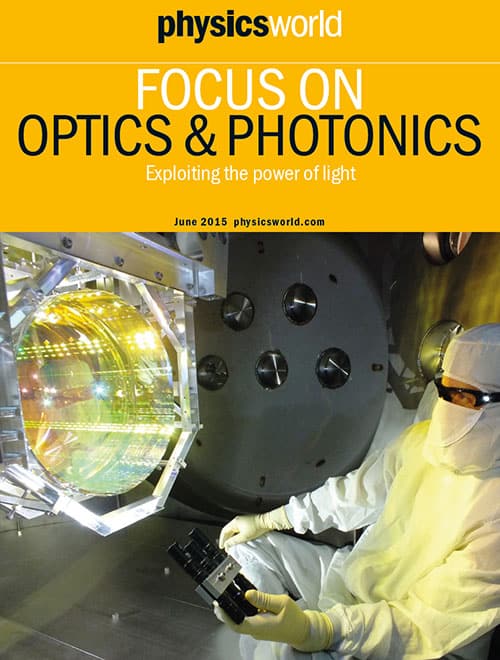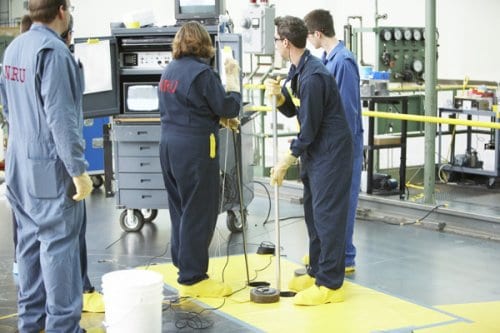Bruno Pontecorvo was the only nuclear physicist who defected from the West after contributing to Allied nuclear research during the Second World War. His flight to the Soviet Union in 1950 rang alarm bells throughout the physics community, but especially in the UK, where he had been employed in the Atomic Energy Research Establishment at Harwell. Since then, the questions of whether Pontecorvo passed restricted information before his defection, and what contribution he made to Soviet atomic energy research after it, have been the focus of several enquiries. The recent declassification of documentation produced by the British security services has revamped the search for answers, and Frank Close’s Half-Life: the Divided Life of Bruno Pontecorvo, Physicist or Spy is the latest book to take advantage of this newly available information.
At this point, I must offer a caveat. Mine is one of two previous works that Close describes as “excellent books” about Pontecorvo (thank you, Frank), and his biography of this Italian-born scientist stems from his reading (and dissecting, as I now realize) of both my published work and several conversations we have had on the subject of “Bruno”. Reading Close’s book was thus an unusual experience for me (at one point, I declared “This is not true!” only to turn to the book’s endnotes and gasp; the source cited was my own book), and so writing this review is a little unusual as well. So, reader, I beg your pardon: I will describe Close’s book, but I cannot comment on it.
Close has carefully examined the declassified papers and gained additional information from a number of other sources. The result is a rich account, containing details on Pontecorvo’s life and career that previous works on atomic espionage overlook. What struck me especially was the description of Pontecorvo’s research on the ethereal “quadium”: a hydrogen isotope wrongly assumed to have potential as an ingredient for a new type of atomic bomb.
It made me wonder whether Ponte-corvo’s one-way trip to Moscow was solicited precisely because of this useless -component. If this is the case, then the Pontecorvo episode would probably fit better in a Monty Python sketch than in the latest James Bond film: in this version of the story, the physicist was headhunted to complete the Soviets’ ultimate nuclear weapon, only to produce a device that fizzled out even before being weaponized. One may also wonder if the Soviets were then, in effect, stuck with “Dr Quadium” (a.k.a. Pontecorvo) and his family, but could not say so.
Close’s book has other surprising twists that would, however, hardly feature in a thriller by Ian Fleming. He describes, for example, how Pontecorvo’s mamma sent him a letter just before his flight to Russia in which she urged him to tell her the truth – as if he were a naughty child caught with his hands in the cookie jar. There is also a shy and mysterious Swedish woman, Marianne Nordblum, among the supporting characters – but she is hardly a deceitful temptress intending to steal Pontecorvo’s secrets. Instead, she is his wife, a woman prone to depression who Bruno loved “to bits”.
By now, you will have realized that I lied when I wrote that I would not comment on Close’s biography. The truth is that his book has the invaluable merit of taking the reader away from the expected cast of covert spies intending to steal secrets (and intelligence agents eager to catch them at it) and placing real human affairs at the centre of the narrative instead. Bruno Pontecorvo thus appears as the ingenuous genius that he was; the naive and lumbering main character of his life’s drama.
On the other hand, when Close does focus on the “spy trail”, I wonder whether his book perhaps gives more credit to espionage literature than the genre deserves. In particular, Close alleges that, before his defection, Pontecorvo might have been the one who smuggled uranium powder to the “Mata Hari” of Massachusetts, Leontine Theresa Cohen. Close also claims that the notorious double agent Kim Philby warned Moscow about Pontecorvo, thus instigating the latter’s defection. He thus renews the doubt that has been haunting many before: was the physicist a spy?
Even if we consider Pontecorvo’s naivety to be apocryphal, and regard as misleading the lack of non-anecdotal evidence on his Communist background, an examination of what Robert De Niro (as ex-CIA operative Jack Byrnes in the film Meet the Parents) calls “circles of trust” gives -reasons to doubt that he was. Spy rings existed in both the US and Canada, but their operatives, with the notable exception of Klaus Fuchs (an exception nonetheless), were recruited among English-speaking Communist Party members. Could Pontecorvo trust them? Could they trust him?
Yes, atomic spies did exist, and, yes, there are still more unidentified codenames in the US counterintelligence “Venona Project” than there are known agents with names and surnames. But the allegory of modern crusaders fighting against scheming Communist infidels to protect a “holy grail” of atomic secrets has rapidly decayed. This narrative was constructed after the first Soviet atomic test in order to cast a negative light on the Communist atomic -programme, but it actually hid the fact that Allied governments encouraged the exchange of scientific information with Soviet Russia right up until 1944.
After the war, other nations joined the race for atomic energy, and they too exchanged “secrets”, above and beyond ideologies and legal protocols. In 1970, for example, a French colleague of Pontecorvo, Lev Kowarski, revealed that many physicists had learned through the grapevine about a Canadian reactor called ZEEP, which became a prototype for the Norwegian JEEP and the Swedish SLEEP. Pressed by his interviewer, though, Kowarski denied committing security violations. “A certain amount of leakage is unavoidable,” he said. One wonders whether he was thinking about his Norwegian colleague Gunnar Randers, who first learned about atomic energy in wartime Britain, was recruited by US officials to acquire secrets of the Nazi nuclear project and, finally, unbeknownst to the Americans, consulted with the French in order to complete a Norwegian reactor. Was Randers ever accused of espionage? Of course not: he was appointed NATO’s science adviser.
Thanks to his contagious enthusiasm, Close has gone a long way towards reconstructing Pontecorvo’s life, and thereby uncovering the real man behind the fictional spy. The acknowledgments at the end of the volume show how many people he has contacted to find the fresh evidence that makes this important appraisal possible. Pontecorvo’s flight to the Soviet Union is still a mystery, but it is thanks to Close that the veil that shrouds a crucial episode in the history of the Cold War may soon fall.
- 2015 Basic Books £20.00/$29.99hb 400pp
 By Matin Durrani
By Matin Durrani
